Project Village: Education is the number one priority
The mountainous indigenous village of San Bernabé Vista Hermosa, near the municipality of Parramos, in the department of Chimaltenango, has been adopted — all 350 inhabitants… by Project Village.
The brainchild of two former law partners from Denver, Colorado, Project Village began in 2006. The original thought was to coordinate and fund projects of other NGOs, each of which specialized in different areas and would provide necessary services to villagers.
The founders, Vince and Tom, set out to find a village where they could implement their view of “Doing Good.” They decided to visit indigenous villages, ask questions and listen to anyone who would talk to them. Conversations, facilitated by existing NGOs, took place in approximately 30 villages throughout Guatemala.
They heard many responses of the “what are you going to do for us” genre, without a recognition of obligation from the village inhabitants who would receive these donations. They kept looking for a village that was not interested in one-time grants or charity, but wanted to work collaboratively with Project Village to improve the lives of its inhabitants. They eventually found San Bernabé.
At the time of their initial visit, San Bernabé was a small cluster of homes on the edge of the vegetable fields where most of the fathers, who generally had a third-grade education, worked as day laborers. The few roads were rutted dirt. The homes were mostly of the corrugated roof and dirt floor variety, some a little better, some even worse.
There were no sanitary facilities or clean water available to the residents. At the center of the village, there was a three-room elementary school, which employed one teacher for 57 students in grades one through six. Once the students completed sixth grade, they were required to enroll in private or public schools outside the village, an arrangement that left many older children with no viable alternative to continue their education.
Vince and Tom sat down and talked with the villagers about their needs and desires. San Bernabé’s residents clearly stated that their priority—above better housing, paved roads or health services—was education for their children, hoping that an improved education would result in their children living better lives.
If Project Village could bring better education to their children, the residents of San Bernabé were willing to do everything they could, without compensation, to successfully partner with Project Village in this one effort. Vince and Tom had originally planned to fund other NGOs to bring services to the village, but there was no other NGO to turn to for this particular venture.
They were lawyers, not educators, but the villagers were definite in what they wanted. Project Village decided it would work with these motivated villagers, help them in every possible way, and see what could be accomplished.
Project Village started with small steps. It provided funding for additional teachers and for scholarships to village children to study beyond sixth grade outside the village. In collaboration with the villagers, a computer lab was added to the elementary school.
Project Village provided funds for the building materials. Fathers worked in the fields all day and built the lab at night. Computers arrived and fathers divided themselves into night guards to protect the computers until they felt the building was secure.
The goal of Project Village is to provide a safe environment in which children may succeed. That has included explaining to parents the importance of proper nutrition and hygiene, of consistent attendance, and of providing a home environment where their child can sit and study for one to two hours every day without distraction.
Project Village has continued its goal of providing education to the students of the village, even as the community has overcome overwhelming obstacles: a father murdered by machete during a robbery; a family member kidnapped and found murdered when the family could not borrow the ransom; a mother who died from illness because there were no funds to pay for treatment; parents who died from alcoholism; a father serving a 12-year prison sentence for stealing a cell phone; and more.
Several years into their “adoption,” the villagers decided to share their good fortune with others, and the educational program expanded to include families who live outside the village. Currently, 270 students are enrolled in Colegio San Bernabé, which extends from kindergarten through high school.
Colegio San Bernabé is a private school, and therefore receives no government funding. Village children attend tuition free, while children living outside the village pay approximately Q1,500 per year. Their parents are expected to contribute meaningfully to the school, in the same way that the village parents continue to do, with manual labor.
The original building is much expanded, and Project Village, with the participation of the villagers and the school’s parents, built a high school building last year on land it purchased about a kilometer below the village.
San Bernabé students at all levels have won many prestigious academic competitions with students attending schools generally thought to be Guatemala’s finest. In the last three years, 14 different middle and high school students, of a student body of approximately 100 students, have qualified as one of the top 10 students in the nation in their grade level in either math, science or physics in the Science Olympiads, the most prestigious academic competition in the country.
This past year, nine of San Bernabé’s 76 middle school students were in the top 10 in the country at their grade level, qualifying more middle school students for the national finals than any other school in the country. Graduates of the high school are attending San Carlos University.
Meanwhile, benches reflecting national champions or top three placements in the Burger King “King of Math” competition are located in both the elementary and high school atriums.
When Project Village arrived in the village of San Bernabé in 2006, there were six students in third grade, none of whom had a possibility to study past sixth grade. Two exceptional students from this grade, due to the assistance of Project Village and its extraordinary efforts, have won full scholarships and are currently studying at prestigious two-year international baccalaureate preparatory programs in Freiberg, Germany and San José, Costa Rica.
The total value of their scholarships is $136,000, more than the combined yearly income of San Bernabé’s inhabitants.
In 2013, the last year that the test was administered, the ninth-graders at San Bernabé received a 90 percent achievement rate in mathematics and a 75 percent achievement rate in language on the national standardized tests.
The national averages were 18 percent and 14 percent, respectively. In 2014, the high school students received a 100 percent achievement rate in mathematics and a 70 percent achievement rate in language. The national averages were 8.7 percent and 26 percent, respectively. Only 10 of the over 3,100 high schools in the country achieved the 100 percent mark.
San Bernabé has seen two small high school graduation classes. Most of these graduates now travel each day by van provided by Project Village to attend San Carlos University in Guatemala City. They are studying civil and computer engineering, accounting, business administration, medicine and agriculture.
“Doing Good…Says Who?” authors Connie Newton and Fran Early have outlined five principles they consider necessary for a successful collaborative “helping” mission. 1) Respect and Value People. 2) Build Trust Through Relationships. 3) Do “With” Rather Than “For.” 4) Ensure Feedback and Accountability. 5) Evaluate Every Step of the Way. Newton and Early also point out that much more can be accomplished with a sustained commitment over time, rather than in short “mission” trips.
Project Village clearly demonstrates these values put into action. Vince and Tom respected the villagers and listened to their desires. They made a commitment to support and help them, but in a collaborative manner.
They delivered the building materials. If the fathers had not built the initial lab, it would not have been built. Project Village has demanded accountability from students, parents and teachers. A 95 percent attendance record is required for a village student to continue to attend the school free of charge.
Mothers supervise the elementary children every day during recess and lunch, and parents have donated countless weekends and evenings working at the school. Evaluation of academic programs has been ongoing, and effectiveness is clear in the academic achievements of the students. And yes, 10 years later, Vince is still very much involved in Project Village.
projectvillageguatemala.org
U.S. tax-deductible donations:
Project Village Guatemala Foundation,
1890 Wynkoop St #603 Denver, CO 80202
REVUE article by Dianne Carofino
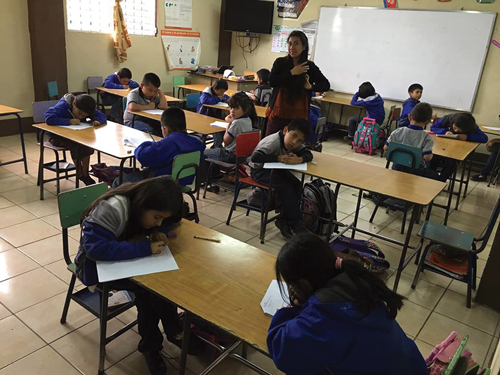
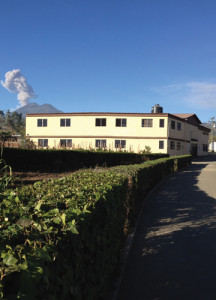
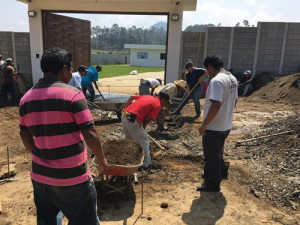
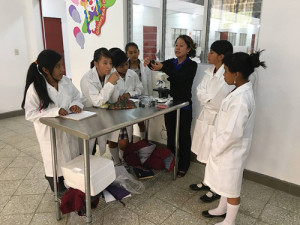
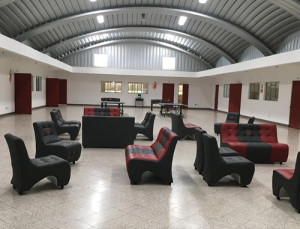
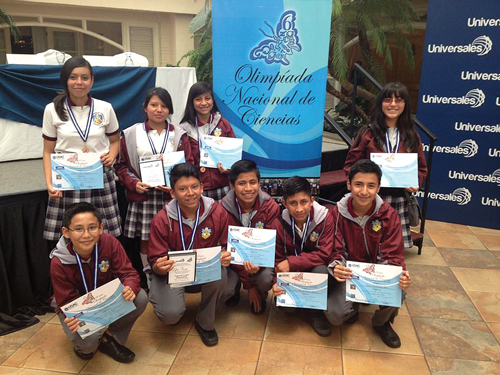
This article is just fantastic! Warms this old heart immensely. I have had the pleasure of meeting Vince and learning a little about their goals and accomplishments. I learned so much more, and have even more respect and admiration for the combined successes. Onward and upward.
Congratulations! Keep going the good work! I pray for you!
Wow! Those statistics are WAY impressive. It’s hard to believe that such high rankings (2013 and 2014) can be accomplished in less than ten years! Good for you! Congratulations to all that have put time and effort and money into making this happen. It is certainly a feel-good story!